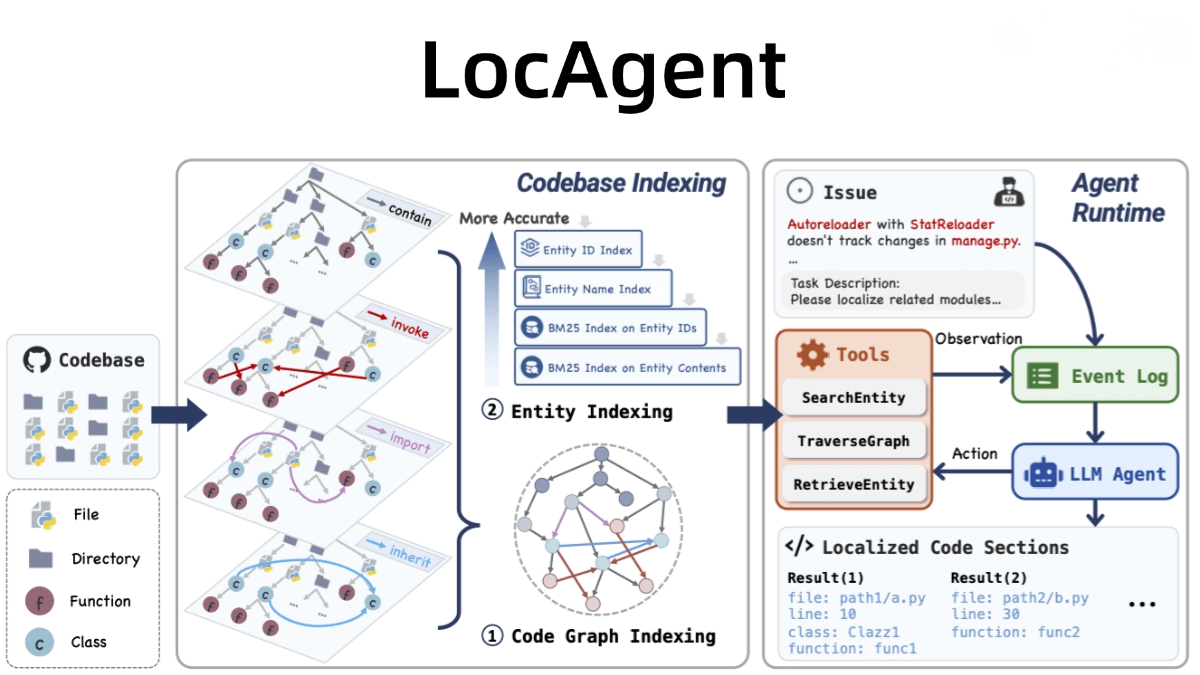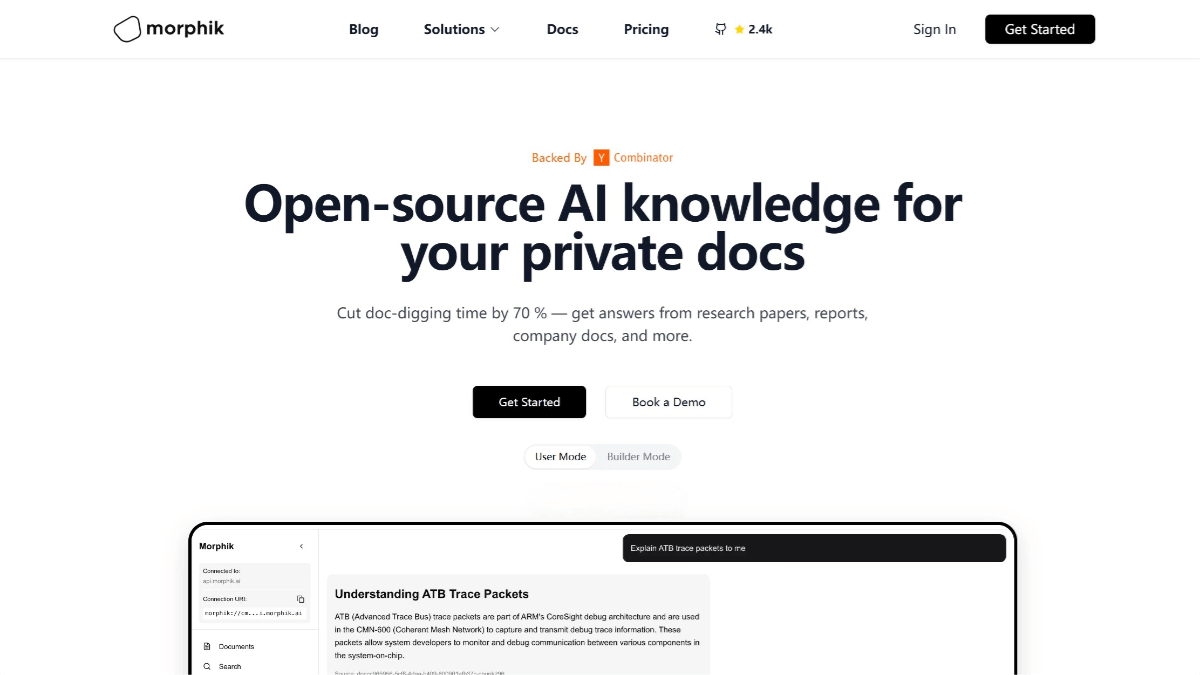LocAgent – An intelligent code issue localization agent jointly launched by Stanford University, Yale University, and other institutions
What is LocAgent?
LocAgent is a framework jointly launched by institutions such as Stanford University, Yale University, and the University of Southern California. It focuses on code localization tasks, helping developers quickly and accurately identify the parts of the codebase that need modification. LocAgent parses the codebase into a directed heterogeneous graph, capturing the structure and dependencies of the code. This enables large language models (LLMs) to leverage their powerful multi-hop reasoning capabilities to efficiently search for and locate relevant code entities. LocAgent provides Agent-based code search tools, such as SearchEntity, TraverseGraph, and RetrieveEntity, to help developers quickly and accurately find the code snippets that need modification, significantly improving development and maintenance efficiency.
The main functions of LocAgent
- Quickly locate the problematic code: Based on the problem described in natural language (such as error reports, feature requests, performance issues, or security vulnerabilities), quickly pinpoint the specific files, classes, functions, or lines of code that need to be modified in the codebase.
- Support for multiple problem types: Support a variety of software development and maintenance tasks, including bug fixes, feature additions, performance optimizations, and security vulnerability fixes.
The Technical Principle of LocAgent
- Multi-hop Reasoning Based on Graph Representation and Large Language Models (LLMs):
◦ Graph Representation: LocAgent parses the codebase into a directed heterogeneous graph, where nodes represent entities in the codebase (e.g., files, classes, functions) and edges represent relationships between entities (e.g., imports, calls, inheritance). This graph structure captures the hierarchical structure and complex dependencies of the code.
◦ Multi-hop Reasoning: Leveraging the reasoning capabilities of LLMs, LocAgent performs multi-hop reasoning to locate the root cause of issues. Even if the problem description does not directly mention the affected code snippet, LocAgent uses the relationship chains in the graph to infer and identify the hidden source of the problem within multiple layers of dependencies. - Efficient search tools:
◦ SearchEntity: Search for relevant entities in the codebase by keywords.
◦ TraverseGraph: Perform multi-hop traversal along the relationships in the graph starting from a given entity.
◦ RetrieveEntity: Retrieve the complete attributes of a specified entity, including code content, file path, line number, etc. - Sparse Hierarchical Index: Construct a sparse hierarchical index, including an index based on entity ID, an index based on entity name, and an inverted index based on the BM25 algorithm. The index can quickly locate code entities related to the problem description and maintain efficient performance in large-scale codebases.
The project address of LocAgent
- GitHub Repository: https://github.com/gersteinlab/LocAgent
- arXiv Technical Paper: https://arxiv.org/pdf/2503.09089
Application scenarios of LocAgent
- Error Fixing: Quickly locate the position of problematic code based on the problem description to reduce debugging time.
- Feature Addition: Add new features to the existing codebase and help developers find code snippets related to the new features and determine the optimal insertion points.
- Performance Optimization: Locate code snippets related to performance bottlenecks and provide optimization suggestions.
- Security Vulnerability Fixing: Quickly locate code snippets related to security vulnerabilities and assist developers in fixing the vulnerabilities.
- Code Maintenance and Refactoring: Help developers find code snippets that need refactoring and provide detailed context information.
Related Posts




